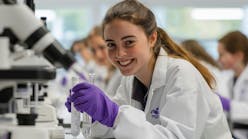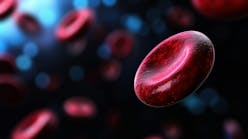HbA1c’s reputation as a reliable analyte for the monitoring of diabetes has led to an increase in the use of HbA1c for diagnosis. Since the conclusion of the Diabetes Control and Complications Trial (DCCT), the National Glycohemoglobin Standardization Program (NGSP) has worked diligently to advance standardization of HbA1c. HbA1c has been used by diabetologists and endocrinologists for the diagnosis of diabetes because it was shown to be more reliable than glucose. It is worth understanding how HbA1c has gained acceptance as an analyte for the diagnosis of diabetes and how this will affect the future of HbA1c testing.
History of HbA1c for diagnosis of diabetes
The first step in a changing attitude towards HbA1c occurred in July 2009. An International Expert Committee, with members appointed by the American Diabetes Association (ADA), the European Association for the Study of Diabetes (EASD), and the International Diabetes Federation (IDF), had convened in 2008 to consider current and future means of diagnosing diabetes in nonpregnant individuals. In their conclusion, the committee presented its principal finding that the “HbA1c assay may be a better means of diagnosing diabetes than measures of glucose levels.”1 The Committee recommended that an HbA1c diagnostic level of 6.5% be set in order to assist with the ultimate goal of identifying and subsequently treating individuals who are at risk for complications from diabetes.
In January 2010, the ADA, for the first time, officially recommended the use of HbA1c for diagnosis of diabetes based on clinical evidence showing that HbA1c was standardized and more reliable than glucose.2 The ADA agreed that an HbA1c of 6.5% should be used for diagnosis and additionally suggested a range of 5.7% to 6.4% to be used for the identification of those at risk for diabetes. The ADA stated that the HbA1c test “should be performed in a laboratory using a method that is NGSP-certified and standardized to the DCCT assay.” They further commented that HbA1c point-of-care devices were not sufficiently accurate for diagnostic purposes. The current 2014 ADA recommendation contains the warning that “although point-of-care (POC) A1C assays may be NGSP-certified, proficiency testing is not mandated for performing the test, so use of these assays for diagnostic purposes may be problematic.”
New performance requirements for HbA1c devices
In April 2010, the FDA sent a letter to manufacturers of cleared HbA1c assays reminding them that their devices had only been cleared to use HbA1c for monitoring people with diabetes. If manufacturers of these devices decided to seek a new claim for the aid in diagnosis, they would have to submit the required data for review.3 Despite the ADA support for the use of HbA1c for diagnosis, the FDA wanted more rigorous testing around the clinical decision point of 6.5% HbA1c in order for devices to make the diagnostic claim. Since performance criteria had not been determined, the FDA encouraged pre-submission communication from manufacturers in order to develop performance criteria to support this new indication for use.
Over the next few years, consensus began to occur on an international scale as more organizations began to officially recommend the use of HbA1c for diagnosis.4,5 At annual industry conferences, manufacturers and the FDA worked together to finalize protocols that followed the ADA guideline. The following requirements had to be met for a device to be used as an aid in diagnosis of diabetes and identifying patients who may be at risk for developing diabetes:
- NGSP-certified method
- Very low level of imprecision at HbA1c of 5%, 6.5,% 8% and 12%
- Very high level of correlation with NGSP certified secondary reference method across entire measuring range with 50% of the samples between 6% and 7% HbA1c,
- Little to no interference from hemoglobin variants or substances at 6.5% HbA1c and ≥8% HbA1c, with an added requirement (for HPLC methods only) to have complete (100%) separation of HbA1c peak from hemoglobin variant peaks on the chromatogram.
The reasoning behind the new testing is based on the need to evaluate the ability of the device to effectively distinguish an HbA1c of 6.4% from an HbA1c of 6.5%, since two different treatment options exist at these two values. The only way to show this ability to distinguish these values is to exhibit a high level of precision, specifically CVs <2%, in order to demonstrate reproducibility and confidence that the right result is generated every time a sample is tested. HPLC methods allow for the visual identification of hemoglobinopathies that can potentially interfere with the HbA1c result. Therefore, it is necessary to have complete separation from variants in order to have a valid HbA1c result. At this time, only a few devices have been cleared by the FDA. It is suspected that some of the devices currently available for HbA1c testing may not be able to meet the strict requirements for precision and accuracy.
Future of HbA1c testing
With an HbA1c-measuring device that has been cleared by the FDA as an aid in the diagnosis of diabetes, some laboratories can greatly reduce or even eliminate the need to run glucose. HbA1c assays have demonstrated the following benefits:- HbA1c results can have a high level of accuracy and do not require fasting, which eliminates the need to re-test and potentially delay diagnosis and/or treatment.6
- HbA1c can offer a higher test reimbursement for the lab.
- HbA1c is more cost-efficient in terms of labor and time to result.
A patient diagnosed with diabetes is at risk of developing retinopathy, neuropathy, and nephropathy, which can result in blindness, amputations, and kidney disease, respectively. If HbA1c is used to identify the disease in its very early stages, unnecessary medication or even surgery could conceivably be avoided. Early intervention can greatly improve a patient’s outcome and quality of life. With a move towards screening for diabetes with HbA1c, the number of people who may be at risk of developing the disease will be identified and thus the prevalence of disease which has staggering financial and human costs will be decreased.
References
- International Expert Committee report on the role of the A1C assay in the diagnosis of diabetes. International Expert Committee. Diabetes Care. 2009;32(7):1327-1334. http://care.diabetesjournals.org/content/32/7/1327. Accessed March 24, 2014.
- American Diabetes Association. Standards of medical care in diabetes—Diabetes Care. 2010;33 Suppl 1:S11-61. http://www.ncbi.nlm.nih.gov/pmc/articles/PMC2797382. Accessed March 24, 2014.
- U.S. Food and Drug Administration. Letter to manufacturers with HbA1c assays listed with the FDA. http://www.fda.gov/MedicalDevices/ProductsandMedicalProcedures/InVitroDiagnosticucm218389.htm. Accessed March 24, 2014.
- Use of glycated haemoglobin (HbA1c) in the diagnosis of diabetes mellitus: abbreviated Report of a WHO Consultation. http://www.who.int/diabetes/publications/diagnosis_diabetes2011/en. Accessed March 24, 2014.
- Mbanya JC, Henry RR, Smith U. Presidents’ statement on WHO recommendation on HbA1c for diabetes diagnosis. Mbanya JC, Henry RR, Smith U. Diabetes Res Clin Pract. 2011;93(3):310-1. doi: 10.1016/j.diabres.2011.06.026. Epub 2011 Jul 28.
- Sacks DB. A1C versus glucose testing: a comparison. Diabetes Care. 2011;34(2):518-523.






